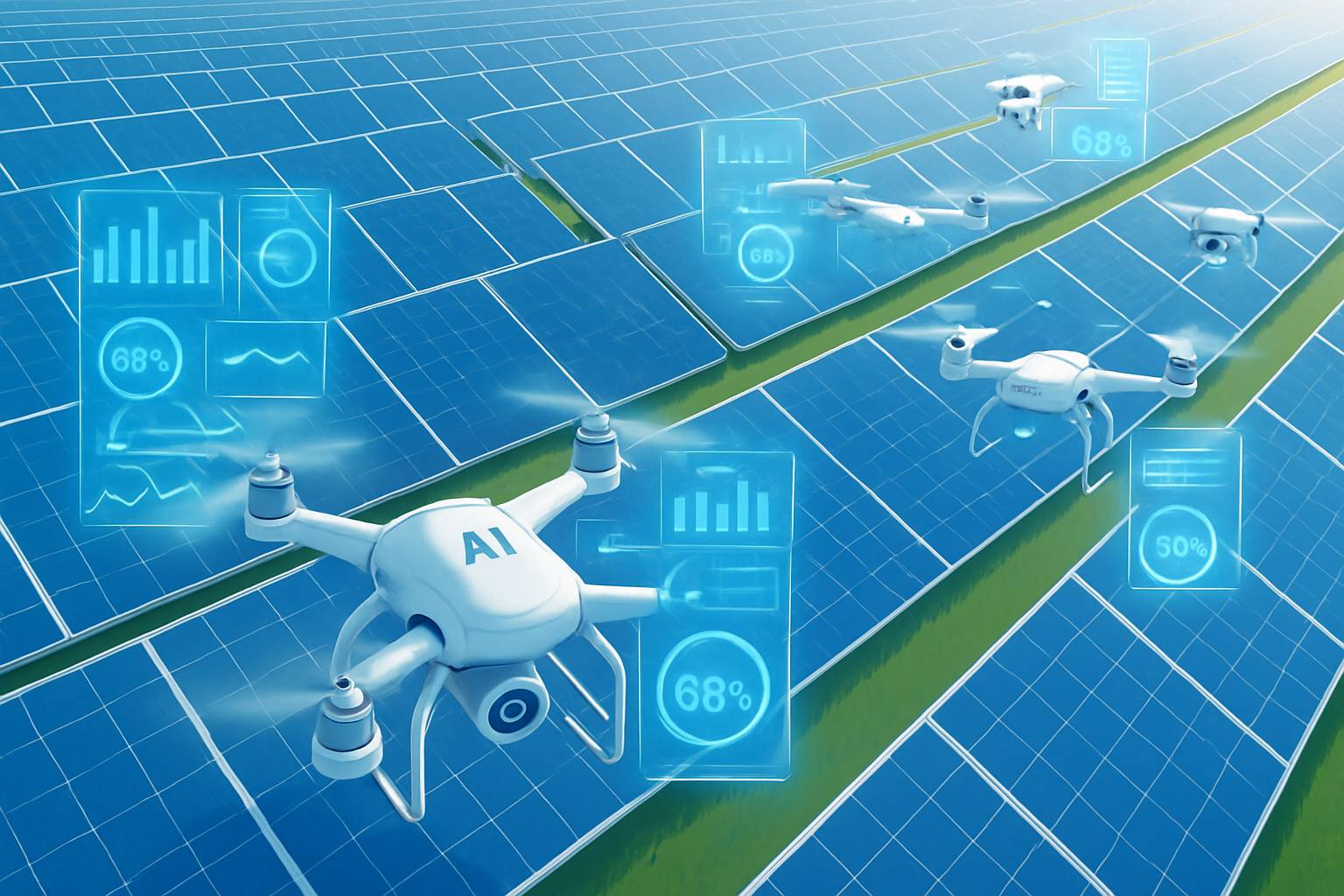
AI CERTS
2 hours ago
AI Drones Revolutionize Infrastructure Inspection
Meanwhile, federal regulators push rules that allow routine flights beyond visual line of sight. Stakeholders across utilities, oil, and renewables monitor the rapid changes. Nevertheless, challenges around certification and liability remain. This article explores the technology, policy, and business forces reshaping Infrastructure Inspection today.
Autonomous Infrastructure Inspection Boom
Global demand for Infrastructure Inspection has surged as AI meets falling hardware costs. GlobeNewswire values the 2024 drone inspection market at around sixteen billion dollars. Moreover, some forecasts predict thirty-eight billion by 2030, implying double-digit compound growth. Drones operating from automated docks already log thousands of autonomous flights for utilities. Skydio reports multiple customers performing daily patrols without on-site pilots. Consequently, inspection frequency increases while crew risk declines. Therefore, Infrastructure Inspection spending is expected to outpace overall drone services.

- 25–50% cost reductions reported by early utility adopters
- 2.8 million connected commercial drones worldwide in 2024
- Mid-double-digit CAGR projected through 2029
These figures confirm autonomy's commercial traction. However, markets shift further as regulations evolve.
Market Shifts Accelerate Rapidly
Energy transition, aging assets, and extreme weather create fresh urgency for digital asset oversight. Furthermore, insurance firms increasingly demand documented, high-frequency inspections for risk underwriting. Infrastructure Inspection workflows that once used helicopters now move to compact Drones equipped with edge AI. Consequently, emissions drop while data quality improves. In contrast, manual rope access remains costly and slow.
- White House BVLOS order targets routine commercial operations within 240 days
- FAA BEYOND waivers expand corridor flights for utilities
- Dock systems enable 24/7 remote launches
These policy and technology drivers hasten adoption curves. Meanwhile, upcoming regulations set the stage for scaled remote operations.
Regulatory Winds Drive Adoption
The regulatory climate shifted markedly in June 2025. The White House ordered the FAA to craft rules enabling routine BVLOS missions. Moreover, the mandate includes performance metrics for safety and airspace integration. FAA BEYOND partnerships already grant waivers for long linear Infrastructure Inspection corridors. Computer Vision aids regulators by providing easily auditable defect evidence. Utilities such as Dominion Energy exploit these approvals to monitor lines without truck rolls. Consequently, operating costs fall while service reliability rises.
Policy momentum therefore removes a pivotal barrier to autonomous scale. However, technology readiness must match regulators' increasing expectations.
Technology Stack Matures Fast
Hardware, software, and connectivity now converge to deliver end-to-end autonomy. Edge AI and Computer Vision run directly on lightweight processors. Consequently, Drones recognize towers, plan paths, and avoid obstacles without uplink latency. Thermal, LiDAR, and gas imaging payloads enrich Infrastructure Inspection datasets for analytics. Dock stations manage charging, weatherproof housing, and remote health checks. Moreover, fleets report availability above ninety-eight percent during pilot programs.
Professionals can enhance their expertise with the AI+ Robotics™ certification. This credential signals competence in aerial autonomy, sensing, and robotic integration.
Collectively, these technologies shift focus from data collection to actionable decisions. Subsequently, attention turns toward physical intervention capabilities.
Repair Capabilities Emerging Now
Research labs have moved beyond cameras toward manipulators and tool changers. Westlake University's FlyingToolbox achieved sub-centimetre mid-air tool exchange in 2025. Moreover, cooperative micro Drones performed the maneuver despite downwash disturbances. Such precision underpins future localized Infrastructure Inspection repairs like crack sealing. Contact ultrasound, spray deposition, and valve actuation prototypes already exist. Nevertheless, standards for bonding strength and verification remain unresolved.
Pilot trials will therefore focus on low-risk assets and small patches first. Meanwhile, regulatory clarity will guide insurance acceptance.
Implementation Challenges Persist Globally
Technical, operational, and social hurdles still slow broad deployment. GNSS denial, high winds, and cyber threats compromise Drones in critical areas. Moreover, data governance rules complicate cross-border Infrastructure Inspection storage. Liability for autonomous repair remains ambiguous between manufacturers, operators, and asset owners. In contrast, pilot oversight today mitigates immediate safety risk. Therefore, stakeholders demand robust detect-and-avoid systems and clear certification pathways.
Addressing these pain points will unlock the next growth phase. Consequently, strategic planning becomes crucial for success.
Strategic Roadmap For Stakeholders
Leaders should prioritize scalable infrastructure, policies, and talent simultaneously. First, deploy autonomous bays near high-value assets for continuous data capture. Secondly, engage regulators early to streamline BVLOS approvals. Thirdly, integrate Computer Vision analytics into existing maintenance platforms. Moreover, workforce upskilling in robotics reduces future Maintenance bottlenecks. Professionals holding AI+ Robotics™ credentials quickly translate findings into actionable Maintenance work orders. Finally, track Infrastructure Inspection metrics against safety, cost, and downtime goals. Consequently, continuous feedback loops improve algorithms and operational resilience.
Autonomy already transforms site awareness. Regulatory momentum and maturing technology accelerate commercial scale. However, aerial repair remains nascent, with pilots validating tools, materials, and standards. Moreover, cross-disciplinary collaboration will decide how fast repairs move from lab to field. Consequently, firms that invest early in data, skills, and governance will capture the largest benefits. Explore advanced certifications and pilot projects now to stay ahead of the curve.



